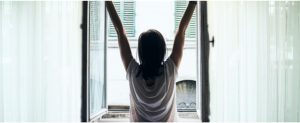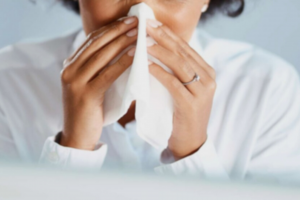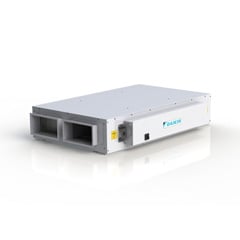Going back to attending public indoor spaces safely is a topic many of us seem to be interested in.
The COVID-19 situation has really made an impact on our lifestyle, leading us to adopt responsible behaviors, which include social distancing and wearing masks.
The lockdown imposed by governments across the world have helped controlling the spread of Coronavirus. And also the summer season has helped, since it has allowed people to spend more time outside, where distancing is easier, and where the virus is naturally “diluted” in an almost infinite quantity of air – which brings its concentration down to almost zero.
Attending indoor environments safely
Now that October is kicking-in, though, it is not going to be possible to spend as much time outdoors as we have done during the summer season. Instead, we are going to have to go back to live indoor environments more.
For this reason, it is important that we are aware of the risks of associated with attending crowded indoor environments. And it is also important that we are aware of the measure that we can take to live indoor environments safely.

While outside any virus naturally dilutes in the air, in indoor environments this dilution process is not as easy, and in most cases must be ensured by proper ventilation.
In indoor environments, in fact, ventilation cannot always be guaranteed by simply opening the windows – which would impact on the thermal comfort of the building occupants. There must be a mechanical means to ensure air exchange and filtration.
Find here Daikin's solutions for mechanical ventilation and indoor air filtration.
Why air exchange is important
In this scenario air exchange becomes fundamental. Just think of the fact that a single sneeze or cough can contain up to 200 million viral particles. And in a short time, those in front can receive a thousand virions, which is enough to lead to an infection. The viral load of an infected person can vary. The largest and heaviest drops fall almost immediately to the ground, while the others can remain suspended in the air, spreading more easily in indoor environments and reaching every point of the room (**).
This shows how it can be easy to get infected by the virus in crowded indoor environments with poor ventilation. But most importantly, it shows how it is important to constantly clean air taking out exhaust air while bringing in fresh air.

It has been clearly explained in the study “Association of infected probability of COVID-19 with ventilation rates in confined spaces: A Wells-Riley equation-based investigation”. (***)
Once an asymptomatic infector who has not been identified as confirmed COVID-19 patient enters a public indoor space, there is a 2% probability of infection at the common ventilation rate (500-2500 m3 /h). If we consider the case of a restaurant, for instance, were people usually spend from 2 to 4 hours, we know that to keep the probability of infection between occupants at 1%, we need 2.4 ACH (/h) (air change per hour), if occupants are not wearing masks. While 0.6 ACH (/h) is enough if occupants are wearing masks. Of course, to keep the probability of infection even lower, we need a higher number of ACH.
So, once an asymptomatic infector enters a public indoor space, the risk of infection for other occupants is quite high if there is not proper ventilation in the building, or there is no ventilation at all. Therefore, it is fundamental to make sure that the ventilation system is properly sized and can provide the right exchange rate per hour.
The importance of air filtration

Another important aspect in relation to the use of ventilation systems to clean air in indoor environment through air-exchange, but also ensuring an adequate level of filtration of the outdoor air that the systems introduces indoor. In fact, since we do not want to introduce outdoor contaminants in indoor environments during the air exchange process, it is important that ventilation systems can adequately filter and clean the outdoor air.
Are you interested in the topic and want more information? Then, get in touch using the form below!
– (**) “Association of infected probability of COVID-19 with ventilation rates in confined spaces: a Wells-Riley equation based investigation”, https://www.medrxiv.org/content/10.1101/2020.04.21.20072397v1
– (***) “The Risks – Know Them – Avoid Them”, https://www.erinbromage.com/post/the-risks-know-them-avoid-them
– (**) “Association of infected probability of COVID-19 with ventilation rates in confined spaces: a Wells-Riley equation based investigation”, https://www.medrxiv.org/content/10.1101/2020.04.21.20072397v1
– (***) “The Risks – Know Them – Avoid Them”, https://www.erinbromage.com/post/the-risks-know-them-avoid-them
